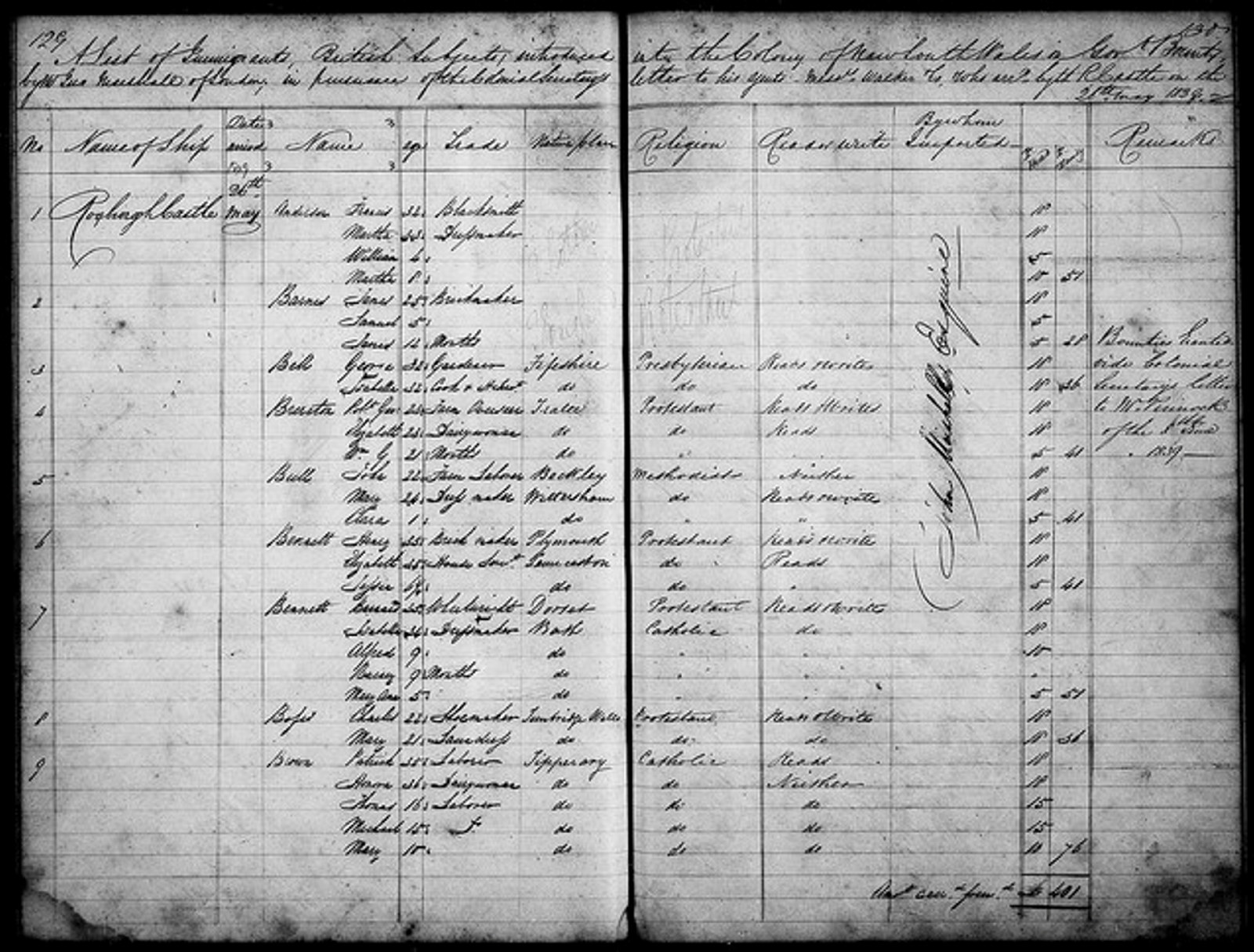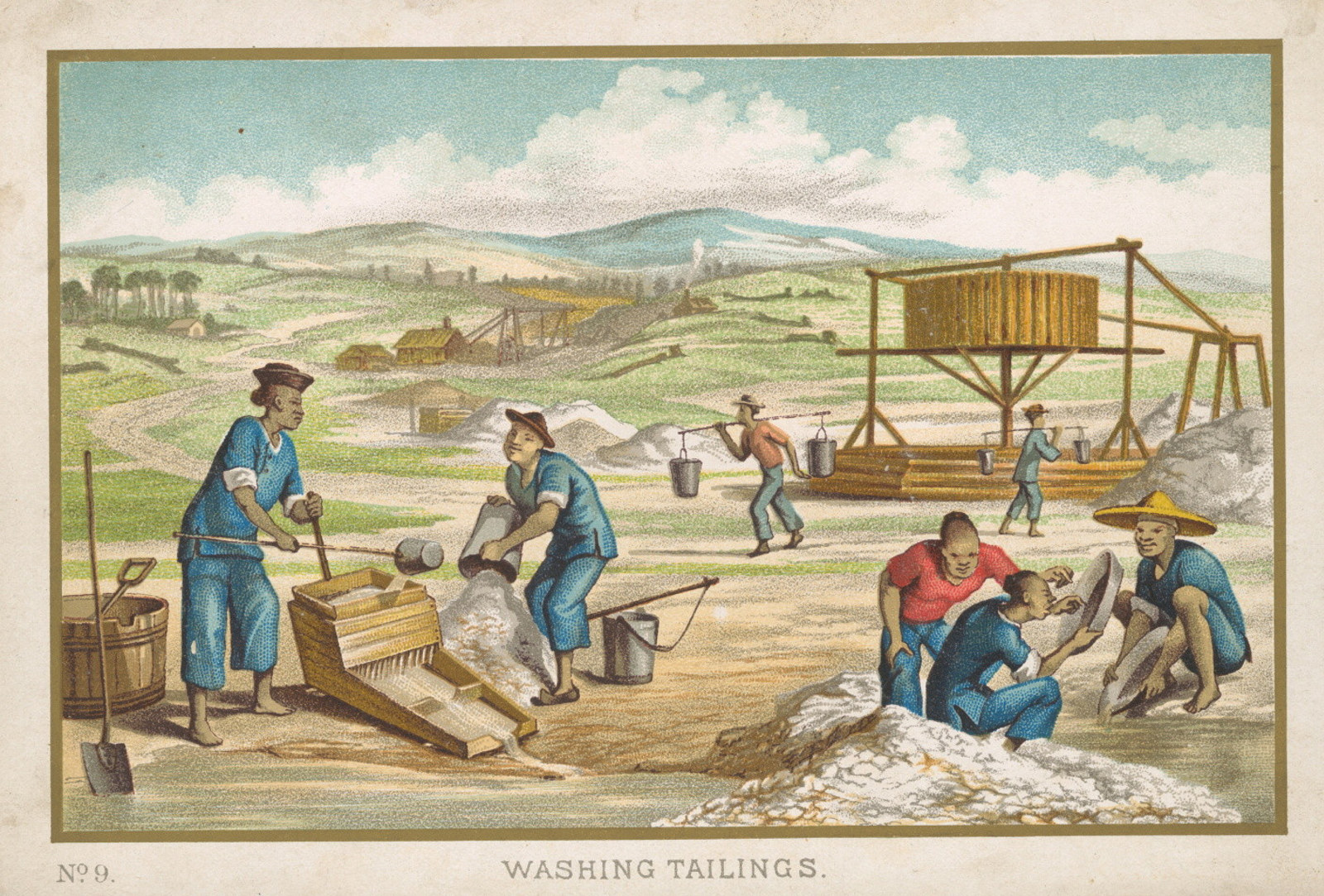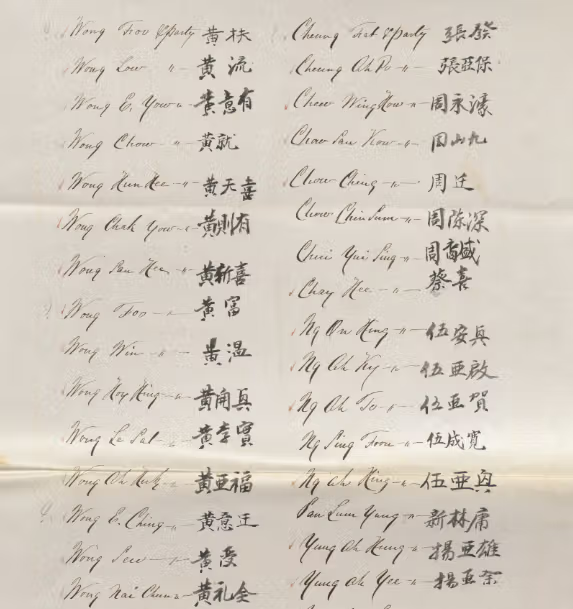Chinese migration & settlement
Background to Chinese migration
Chinese migration and settlement in New South Wales has a long history. Early musters and census include Chinese and although Chinese migration was being considered as a solution to the labour shortage in the Colony as early as 1828, the numbers remained low until the middle of the nineteenth century.
The first group of Chinese labourers (100 adults and 20 boys) from Amoy embarked for NSW in 1848.1 From the beginning, Chinese indentured labourers aroused the animosity of other citizens. With the discovery of gold in 1851 Chinese immigration increased and by 1855 numbered 17,000.2
During the nineteenth and much of the twentieth century there were State (and later Federal) laws that placed restrictions on Chinese entry into the country. The growing number of Chinese in the Colony incited greater racial intolerance and in 1861 the New South Wales Government passed the Chinese Immigration Regulation and Restriction Act. This Act, which was a reaction to the immigration of Chinese gold seekers, was repealed in 1867 when the gold rushes appeared to have been exhausted. The Act however, initiated a legislative framework that regulated how long the Chinese could stay, whether or not they could bring their families, become naturalised, whether or not they could work and for whom and their opportunities to employ others.3
These restrictions continued until the late twentieth century. The policy behind this framework, while not always directly stated, became known as the ‘White Australia Policy’.4 Acts directly aimed at restricting the influx of Chinese were passed in 1881 and 1887.
In 1898 NSW enacted another restrictive law, which was aimed at excluding all non-Europeans, including those who were British subjects. This Act was the first to include a dictation test.When the Federal Government assumed responsibility for immigration the dictation test was included in the Federal Immigration Restriction Act 1901. This meant that the 'White Australia Policy’ effectively excluded immigrants from Asian countries for over 50 years.
By the late 1950s the official climate had begun to change. This was reflected in amendments to Federal immigration laws. A major step towards a new immigration policy was the decision in 1957 to allow non-Europeans with 15 years residence in Australia to become Australian citizens. Restrictions on non-European immigration began to be further reduced after the review of the 'non-European' policy in March 1966.Following this review, the Federal Government announced the easing of restrictions on non-European migrants.
In 1973 the Government took further steps to remove 'race' as a factor in Australia's immigration policies. Immigration was comprehensively reviewed in 1978 and new policies and programs were adopted. Today, almost one in four of Australia's population of around 23 million people was born overseas — with 7% being born in China.
1891 Census
NRS 683: 1891 Census, Mudgee District. List of 20 Chinese names [2/8406]
Chinese and the Goldfields
References to Chinese miners can be located in the records of the Gold Commissioners and in the records of Mining Wardens’ Courts in the Department of Mines. Further references to Chinese on the minefields, including documents relating to the Lambing Flat ‘riots’ in 1860-1861, may be found in the records of the Colonial Secretary and Department of Lands. See the catalogue for records of the relevant public offices.
Example
An example is this petition from Chinese miners at the Rocky River Goldfield, 18 April 1866, for the return of Commissioner Dalton to the area as Gold Commissioner. It is clear from the petition that the Chinese miners felt protected by Dalton's presence in a colony rife with racial intolerance.
NRS 7933, Letters received [Department of Lands]. Petition from the Chinese miners at the Rocky River Goldfield, 1866 [Enclosure to Letter No.66/2953 in 5/3703B] (Chinese scroll and English translation)
Specific records relating to Chinese
Series | Title | Dates |
|---|---|---|
Colonial Secretary: Special Bundles - Proposed prohibition of Chinese Immigration into Australia, 1880-81 [4/829.1] Contains correspondence, telegrams detailing Chinese passengers on board certain vessels, papers associated with an outbreak of smallpox and a return of Chinese passengers to China in 1880. - Prohibition of Chinese Immigration into Australia, 1887–88 [4/884.1] Contains an extract from the Government Gazette in relation to quarantine and an anti-Chinese memorial dated 1880, return showing Certificates of Naturalization issued to Chinese people from 1881-1888, as well as a return showing the number of Certificates issued under Section 9 of the Influx of Chinese Restriction Act. There is also correspondence relating to vessels containing Chinese passengers, including the steamers Afghan and Tsinan, 9 May 1888. - Papers re Chinese Immigration, 1888 [2/8095.3] No further details | 1826-1982 | |
NRS 2273[6/5445] | Hay Gaol description book , contains a decorated index for "celestials alone" or Chinese. | 1875-1887 |
NRS 4833[10/43045] | Exhumation files Includes the names of Chinese people whose bodies were exhumed to be taken back to China | 1928-1929 |
Footnotes
1 C.Y.Choi, Chinese Migration and Settlement in Australia (Sydney, 1975)
2 Ibid.
3 Julie Stacker and Peri Stewart, Chinese Immigrants and Chinese-Australians in NSW, Australian Archives, 1996.
4 Ibid.
Related

Assisted Immigrants Index 1839-1896
Assisted immigrants arriving in Sydney and Newcastle 1844-59, Moreton Bay 1848-59 and Port Phillip 1839-51

Chinese on the goldfields
By the early 1850s, news of a gold rush in Australia sparked an influx in Chinese migration to Australia.

In the State Archives catalogue
Petition respecting compensation due to Chinese Miners for losses sustained in Lambing Flat Riots. NRS-7933-1-[5-3673]-64-2663